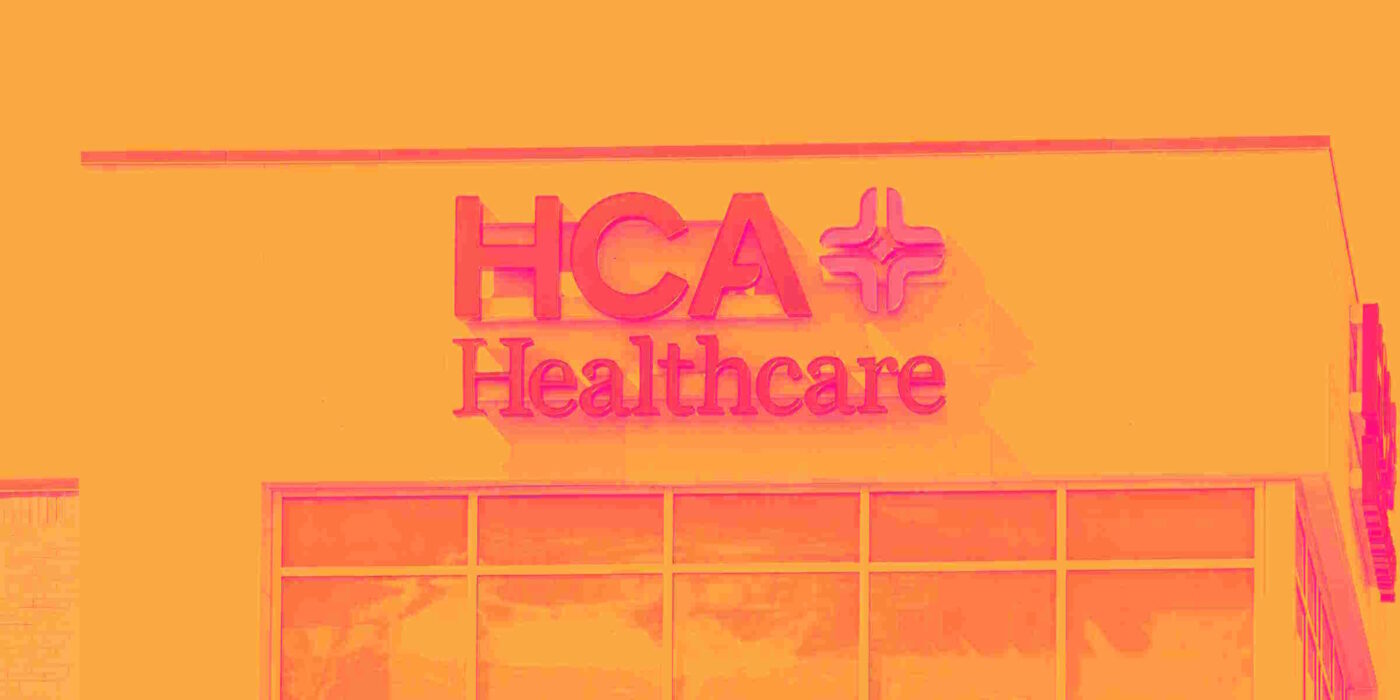
Hospital operator HCA Healthcare (NYSE:HCA) announced better-than-expected revenue in Q4 CY2024, with sales up 5.7% year on year to $18.29 billion. Its non-GAAP profit of $6.22 per share was 1.2% above analysts’ consensus estimates.
Is now the time to buy HCA Healthcare? Find out by accessing our full research report, it’s free.
HCA Healthcare (HCA) Q4 CY2024 Highlights:
- Revenue: $18.29 billion vs analyst estimates of $18.16 billion (5.7% year-on-year growth, 0.7% beat)
- Adjusted EPS: $6.22 vs analyst estimates of $6.14 (1.2% beat)
- Adjusted EBITDA: $3.71 billion vs analyst estimates of $3.69 billion (20.3% margin, 0.5% beat)
- Operating Margin: 13.5%, down from 16.4% in the same quarter last year
- Free Cash Flow Margin: 7%, down from 8.8% in the same quarter last year
- Same-Store Sales rose 3% year on year, in line with the same quarter last year
- Market Capitalization: $84.76 billion
"We finished 2024 with strong business fundamentals that were consistent with previous quarters," said Sam Hazen, Chief Executive Officer of HCA Healthcare.
Company Overview
Founded in 1968 as a single hospital, HCA Healthcare (NYSE:HCA) is one of the largest hospital operators in the US today, running hospitals, urgent care centers, surgery centers, and emergency rooms.
Hospital Chains
Hospital chains operate scale-driven businesses that rely on patient volumes, efficient operations, and favorable payer contracts to drive revenue and profitability. These organizations benefit from the essential nature of their services, which ensures consistent demand, particularly as populations age and chronic diseases become more prevalent. However, profitability can be pressured by rising labor costs, regulatory requirements, and the challenges of balancing care quality with cost efficiency. Dependence on government and private insurance reimbursements also introduces financial uncertainty. Looking ahead, hospital chains stand to benefit from tailwinds such as increasing healthcare utilization driven by an aging population that generally has higher incidents of disease. AI can also be a tailwind in areas such as predictive analytics for more personalized treatment and efficiency (intake, staffing, resourcing allocation). However, the sector faces potential headwinds such as labor shortages that could push up wages as well as substantial investments needs for digital infrastructure to support telehealth and electronic health records. Regulatory scrutiny, and reimbursement cuts are also looming topics that could further strain margins.
Sales Growth
Examining a company’s long-term performance can provide clues about its quality. Any business can put up a good quarter or two, but the best consistently grow over the long haul. Unfortunately, HCA Healthcare’s 6.6% annualized revenue growth over the last five years was mediocre. This fell short of our benchmark for the healthcare sector, but there are still things to like about HCA Healthcare.
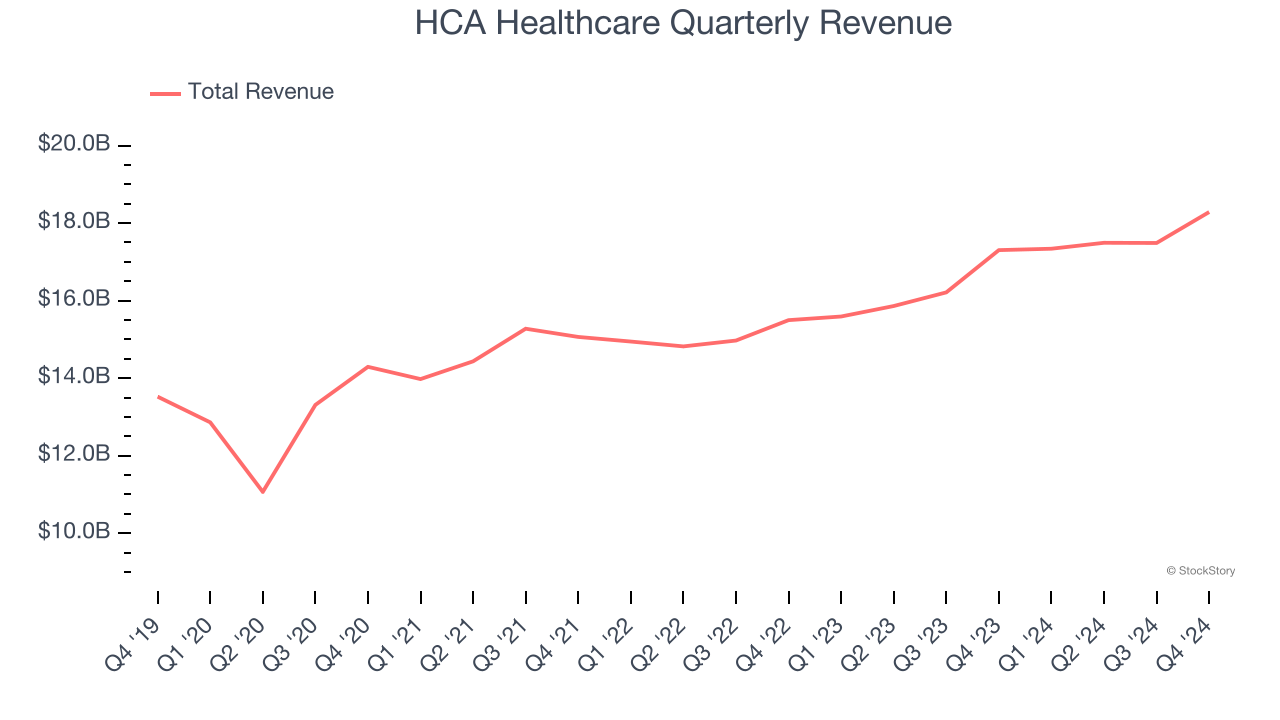
We at StockStory place the most emphasis on long-term growth, but within healthcare, a half-decade historical view may miss recent innovations or disruptive industry trends. HCA Healthcare’s annualized revenue growth of 8.3% over the last two years is above its five-year trend, suggesting some bright spots. 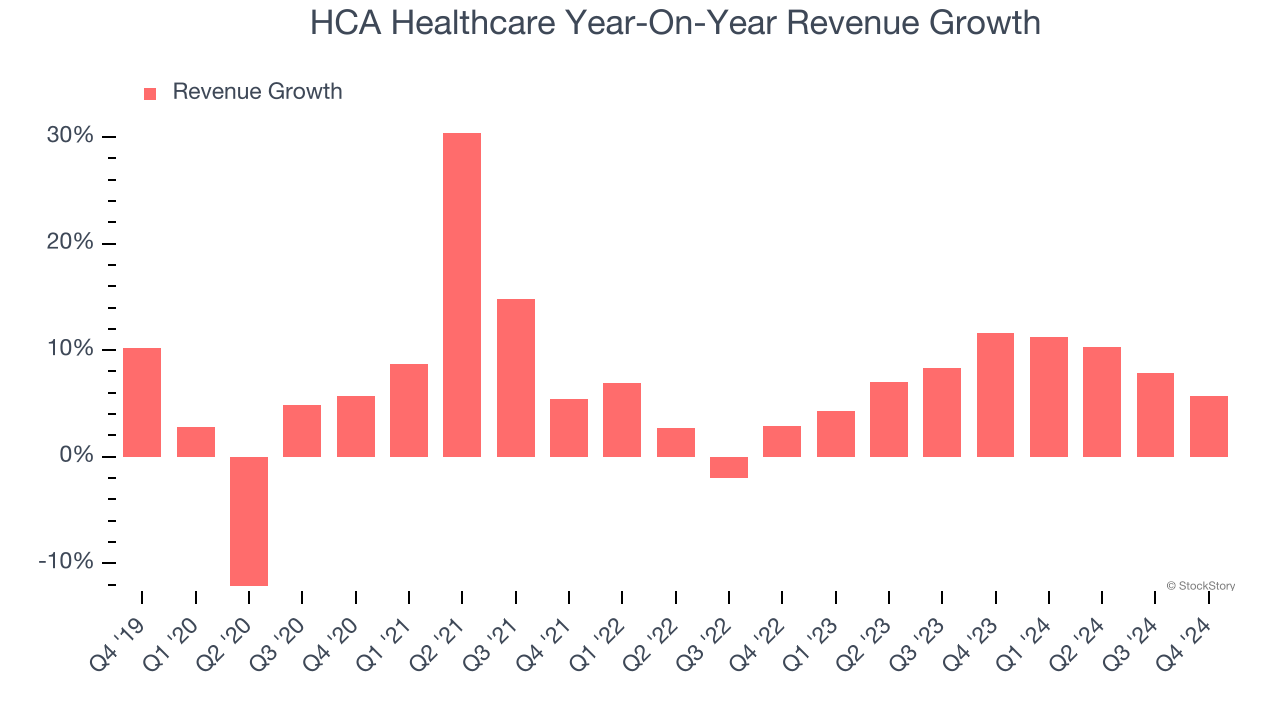
We can dig further into the company’s revenue dynamics by analyzing its same-store sales, which show how much revenue its established locations generate. Over the last two years, HCA Healthcare’s same-store sales averaged 4.1% year-on-year growth. Because this number is lower than its revenue growth, we can see the opening of new locations is boosting the company’s top-line performance. 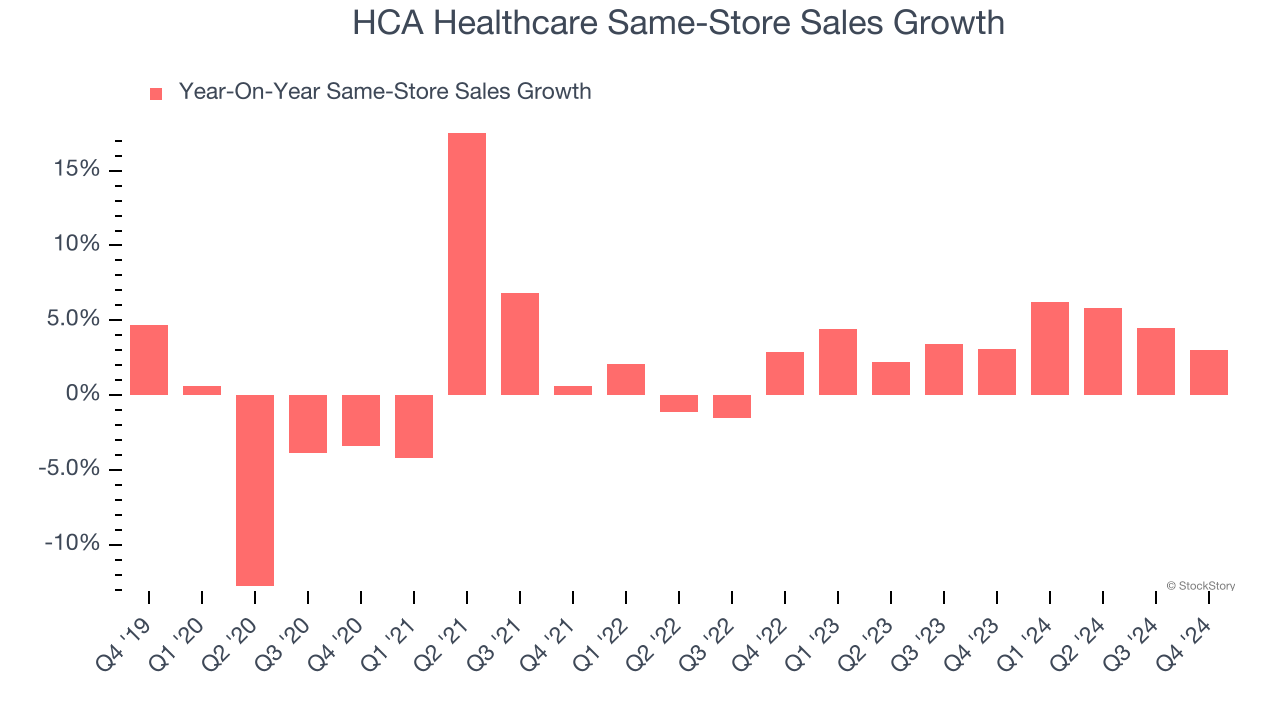
This quarter, HCA Healthcare reported year-on-year revenue growth of 5.7%, and its $18.29 billion of revenue exceeded Wall Street’s estimates by 0.7%.
Looking ahead, sell-side analysts expect revenue to grow 5.6% over the next 12 months, a slight deceleration versus the last two years. We still think its growth trajectory is satisfactory given its scale and indicates the market is baking in success for its products and services.
Today’s young investors won’t have read the timeless lessons in Gorilla Game: Picking Winners In High Technology because it was written more than 20 years ago when Microsoft and Apple were first establishing their supremacy. But if we apply the same principles, then enterprise software stocks leveraging their own generative AI capabilities may well be the Gorillas of the future. So, in that spirit, we are excited to present our Special Free Report on a profitable, fast-growing enterprise software stock that is already riding the automation wave and looking to catch the generative AI next.
Adjusted Operating Margin
Adjusted operating margin is a key measure of profitability. Think of it as net income (the bottom line) excluding the impact of non-recurring expenses, taxes, and interest on debt - metrics less connected to business fundamentals.
HCA Healthcare has managed its cost base well over the last five years. It demonstrated solid profitability for a healthcare business, producing an average adjusted operating margin of 15.4%.
Looking at the trend in its profitability, HCA Healthcare’s adjusted operating margin might have seen some fluctuations but has generally stayed the same over the last five years.
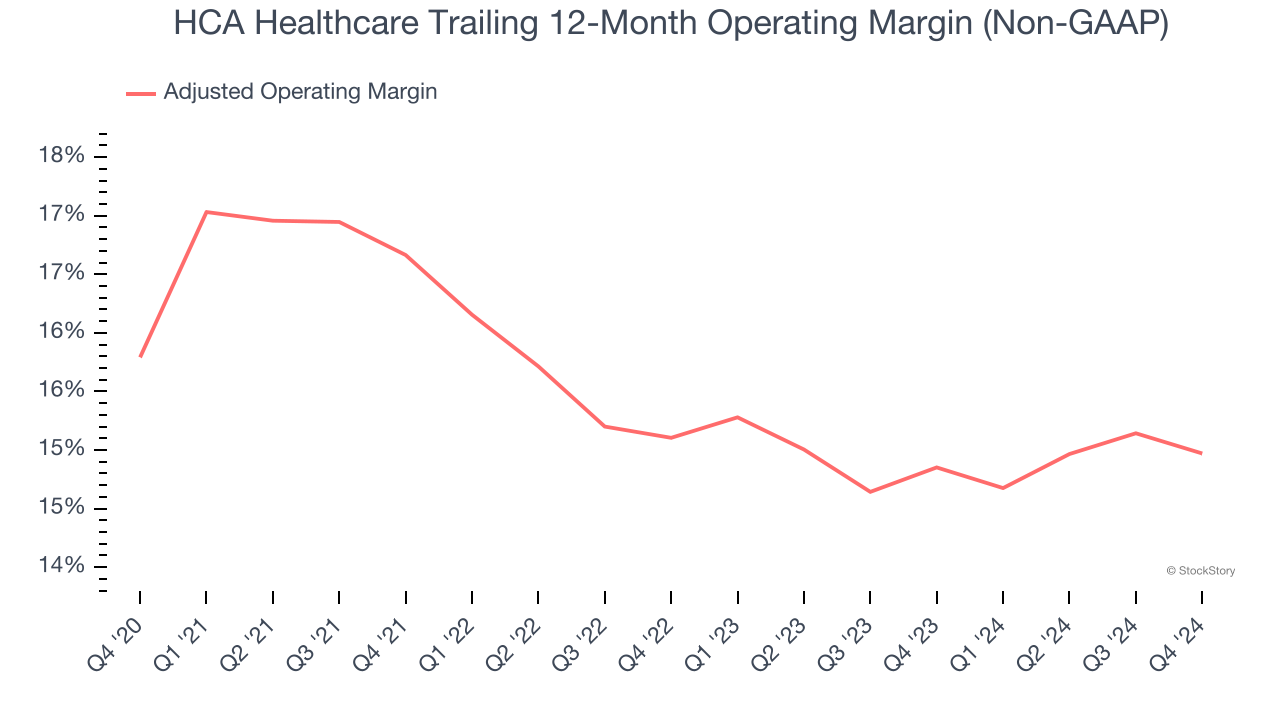
In Q4, HCA Healthcare generated an adjusted operating profit margin of 15.6%, in line with the same quarter last year. This indicates the company’s overall cost structure has been relatively stable.
Earnings Per Share
Revenue trends explain a company’s historical growth, but the long-term change in earnings per share (EPS) points to the profitability of that growth – for example, a company could inflate its sales through excessive spending on advertising and promotions.
HCA Healthcare’s EPS grew at an astounding 15.9% compounded annual growth rate over the last five years, higher than its 6.6% annualized revenue growth. However, this alone doesn’t tell us much about its business quality because its adjusted operating margin didn’t expand.
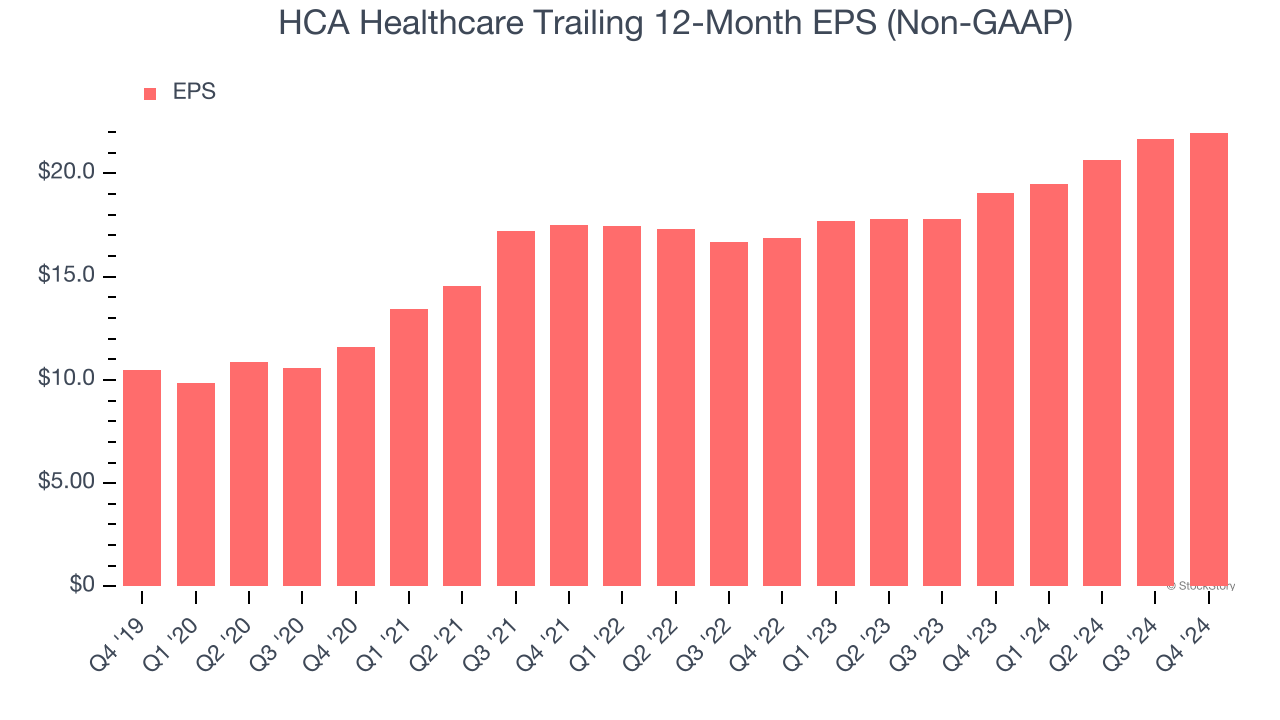
We can take a deeper look into HCA Healthcare’s earnings to better understand the drivers of its performance. A five-year view shows that HCA Healthcare has repurchased its stock, shrinking its share count by 26.3%. This tells us its EPS outperformed its revenue not because of increased operational efficiency but financial engineering, as buybacks boost per share earnings. 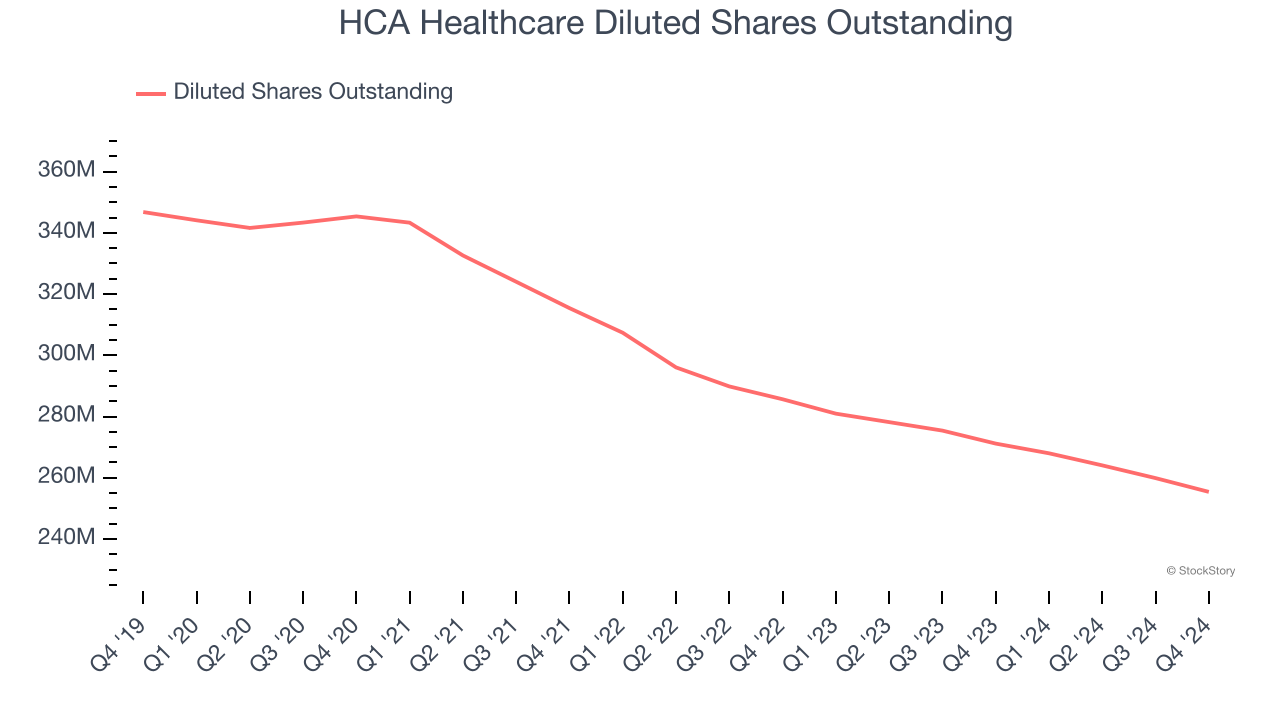
In Q4, HCA Healthcare reported EPS at $6.22, up from $5.90 in the same quarter last year. This print beat analysts’ estimates by 1.2%. Over the next 12 months, Wall Street expects HCA Healthcare’s full-year EPS of $21.98 to grow 11.9%.
Key Takeaways from HCA Healthcare’s Q4 Results
It was good to see HCA Healthcare narrowly top analysts’ revenue expectations this quarter. On the other hand, its same-store sales missed significantly and its EPS was in line with Wall Street’s estimates. Overall, this was a softer quarter.
HCA Healthcare underperformed this quarter, but does that create an opportunity to invest right now? The latest quarter does matter, but not nearly as much as longer-term fundamentals and valuation, when deciding if the stock is a buy. We cover that in our actionable full research report which you can read here, it’s free.














